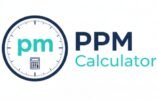Parts per million (PPM) is more than just a unit of measurement—it’s a cornerstone of precision in modern industry. Whether you’re overseeing a manufacturing line, managing water treatment, or ensuring product safety, understanding and applying PPM can make the difference between success and costly mistakes.
The Role of PPM in Industry
Why PPM Matters
In industrial settings, even the smallest impurity or defect can have significant consequences. PPM provides a way to measure and control these trace amounts, ensuring products meet strict quality and safety standards. For example, in semiconductor manufacturing, contamination levels must be kept below 1–10 ppm to prevent defects in microchips. In pharmaceuticals, active ingredients and contaminants are monitored at the ppm level to guarantee safety and efficacy.
Quality Control and Defect Reduction
PPM is essential for tracking defect rates in high-volume production. A defect rate of 50 ppm means 50 defective units per million produced—a critical metric for continuous improvement and customer satisfaction. Many industries use PPM as a benchmark for quality, especially within Six Sigma methodologies, where the goal is to reduce defects to below 3.4 ppm.
If you want to see how PPM relates to process capability, the PPM to CPK Calculator offers a practical tool for quality engineers.
Key Industrial Uses of PPM
Chemical Dosing and Process Control
Accurate chemical dosing is vital in sectors like water treatment, food processing, and pulp and paper. Maintaining the right concentration—often measured in ppm—ensures both efficiency and compliance. For instance, cooling towers rely on precise dosing to prevent scale and corrosion, protecting equipment and reducing downtime.
If you’re working with chemical dosing, the Chemical Dosing PPM Calculator can help you determine the exact amount needed for your process.
Environmental Compliance
Industries must monitor emissions and effluents to meet environmental regulations. Air pollutants such as sulfur dioxide (SO₂) and nitrogen oxides (NOₓ) are tracked in ppmv (parts per million by volume), while wastewater discharge is measured in ppm to ensure safe disposal. Accurate measurement and reporting are crucial for avoiding fines and protecting the environment.
For quick conversions between ppm and mg/L, visit the PPM to mg/L Calculator.
Sensor Calibration and Automation
Modern factories use sensors to monitor gases, chemicals, and other variables in real time. These sensors often output data in ppm, allowing for immediate adjustments to maintain optimal conditions. For example, gas detectors in manufacturing plants use ppm readings to trigger alarms and ventilation systems, ensuring worker safety.
If you need to translate sensor outputs, the PPM to Voltage Calculator provides a straightforward way to calibrate and interpret sensor data.
Quality Assurance and Six Sigma
Defect rates measured in PPM are central to quality assurance programs. By tracking and reducing PPM, companies can improve product reliability and customer trust. The PPM Calculation Examples page offers real-world scenarios to help teams understand and apply these concepts.
Best Practices for Managing PPM in Industry
Regular Calibration and Maintenance
Accurate PPM measurements depend on well-maintained instruments. Schedule regular calibrations and keep detailed records to ensure ongoing reliability.
Clear Documentation
Document all calculations, measurements, and corrective actions. This supports traceability, audits, and continuous improvement.
Staff Training
Ensure your team understands PPM concepts and their importance. Well-trained staff are better equipped to maintain quality and respond to issues quickly.
Use the Right Tools
Different applications require specific calculators and methods. For example, dosing chemicals in water treatment is different from monitoring air quality. Explore specialized tools like the PPM Solution Calculator for mixing and dilution tasks.
Frequently Asked Questions
What is an acceptable defect rate in PPM?
Acceptable rates vary by industry. Electronics manufacturing may require rates below 10 ppm, while other sectors tolerate higher levels. The goal is always to minimize defects as much as possible.
How do I convert between PPM and other units?
Conversions depend on the context. For solutions, 1 ppm is roughly equal to 1 mg/L. For gases, temperature and pressure must be considered. The Convert PPM to Concentration Units guide explains these conversions in detail.
Why use PPM instead of percent?
PPM allows for precise measurement of very small quantities, which is essential for quality control and regulatory compliance in many industries.
Conclusion
PPM is a powerful tool for achieving precision, quality, and compliance in industrial environments. By understanding its applications and using the right tools, you can ensure your processes run smoothly and your products meet the highest standards. For more calculators, guides, and best practices, explore the resources at PPMCalculator.com.
